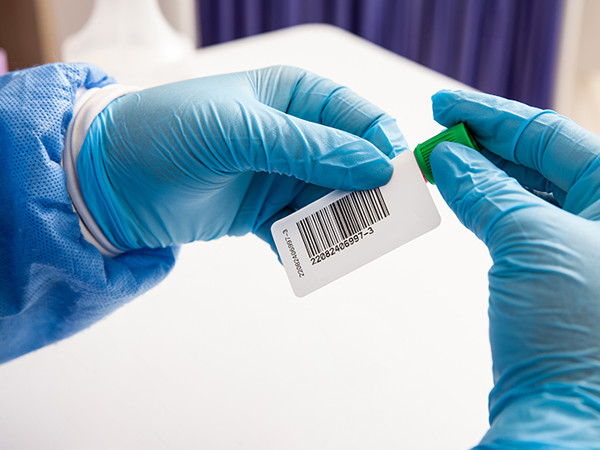Special Label Constructions for Special Needs
Self-Laminated Protection
Self-laminating labels feature an attached clear film that can be applied over the top of the label before being put into use. This type of construction is ideal for labels that must be written on and will be exposed to detergents, chemicals, oil and possible tampering. The clear top seal covers and protects the label face.
Materials for Tightly Curved Objects
Tight mandrel hold is the term used to describe a label or tape’s ability to wrap around a cylindrical object and remain wrapped without popping up. If you are labeling objects such as vials or syringes you need to be sure that the material is flexible. Flexible papers or synthetic materials such as polypropylene or vinyl are good choices.
Labels or Tapes That Can Be Steam Sterilized
Steam Sterilization (Autoclave) is a simple yet very effective decontamination method. Sterilization is achieved by exposing products to saturated steam at high temperatures (121°C to 134°C). Product(s) are placed in a device called the autoclave and heated through pressurized steam to kill all microorganisms including spores. The device's exposure time to steam would be anywhere between 3 to 15 minutes, depending on the generated heat.
The steam sterilization process is not appropriate for many materials due to the high temperatures involved. It is important to be sure that labels are rated for autoclave use.
Tamper-Indicating
These labels are made from materials that either destruct upon attempted removal or leave behind indications of tampering such as the word void. Some examples where Tamper-indicating tapes and labels are used include equipment, specimen containers, drug packaging, and clean/sterilized packages.
Flag-Style Labels
Small objects or highly curved surfaces can be a challenge to label. Flag constructions offer the ability to adhere to an object and provide a non-adhesive end for easy viewing and scanning. Some constructions achieve flagging by placing a slit on the back of the label liner. By removing just one half of the liner back to expose the adhesive, the label can wrap onto tubing or syringes while keeping the other end free to flag. The advantage is that the flagging half can be removed, taken off the liner and placed into a record. Other products achieve flagging by only having adhesive on one end.
